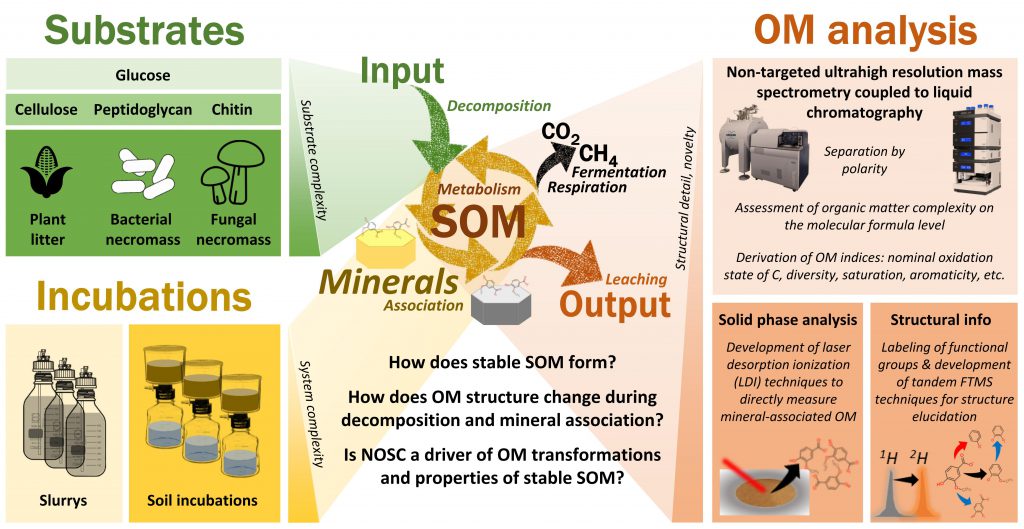Novel ultra-high resolution mass spectrometric approaches to decipher structural and physico-chemical drivers of soil organic matter stabilization

Stable soil organic matter (SOM) is an inherent property but also a requirement for soil ecosystem functioning. Microbial activity is a major driver of carbon turnover and SOM formation, but the extent to which stable SOM is formed is modulated by boundary conditions like redox state and mineral composition. Advancement in our understanding of SOM stabilization mechanisms is currently limited by the ability to directly assess the molecular composition of the mineral associated fraction and to determine the molecular structures of SOM, which are ultimately decisive factors for the carbon sequestration in soils. Structure-specific and surface-sensitive FT-ICR MS methods opens up an entirely new perspective to study microbial utilization of substrates and energy-use channels, map transformation pathways, decipher structure-energy relationships in complex SOM, explore the formation and stability of mineral-associated OM, and finally to understand SOM stabilization on a holistic level. To this end, we will employ 1) online-LC-FT-ICR MS to obtain physico-chemical information and LC-tandem MS methods to get meaningful compositional and structural information even for the most complex SOM, 2) functional group enumeration via isotope tagging to study the prevalence of structural moieties on a molecular level even when tandem MS fails to resolve compound classes, and 3) direct LDI-FT-ICR MS for the surface analysis of the organic matter after sorption to minerals. We will apply these tools to microbial microcosm experiments with different substrates and redox conditions, representing variable energy-use channels, to illuminate energy and matter dissipation on a molecular level. The overarching goal of this project is to promote the understanding of complex soil organic matter turnover from a bulk and molecular formula level to a structural level. This new level of SOM understanding, together with the project partners in the SPP SoilSystems will allow an integrative and comprehensive assessment and modeling of the energy-use channels and boundary condition limitations of OM turnover in soils.
Link to English scientific abstract
Link to German scientific abstract